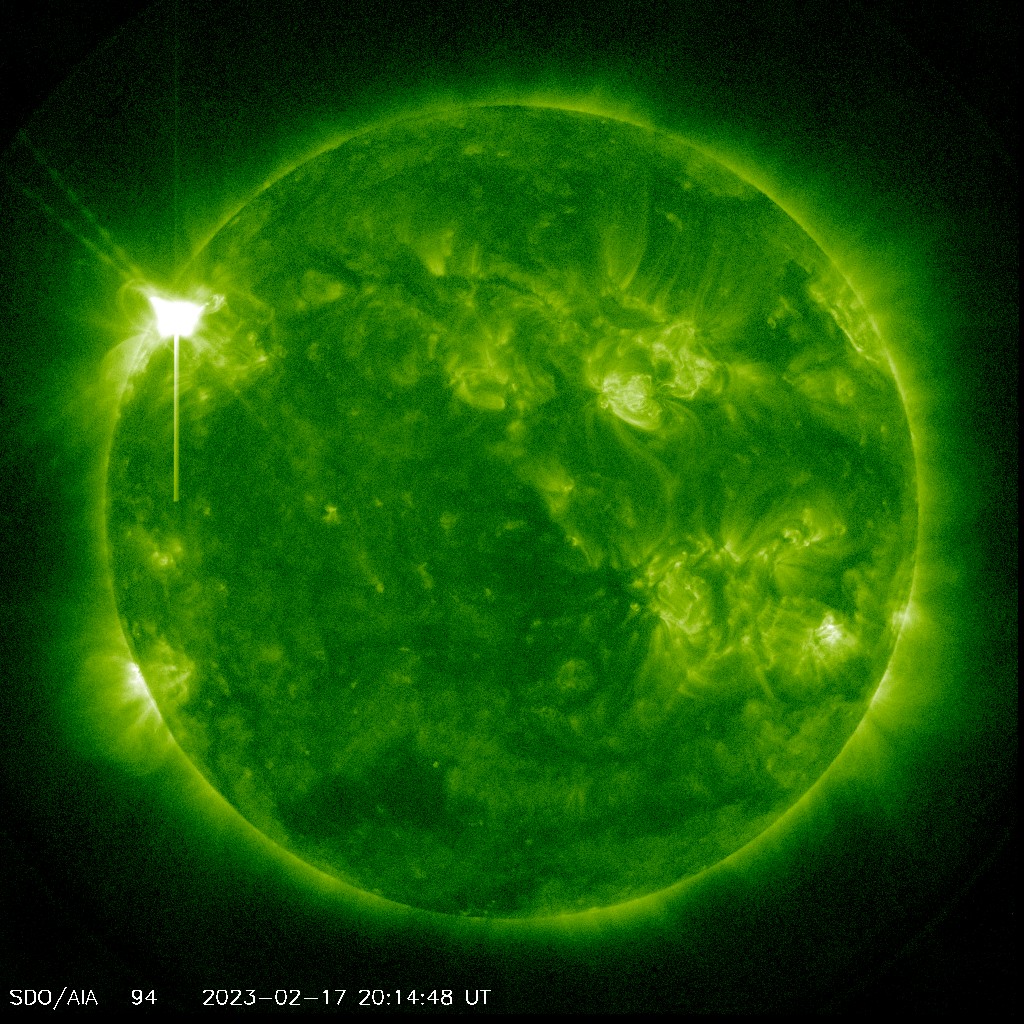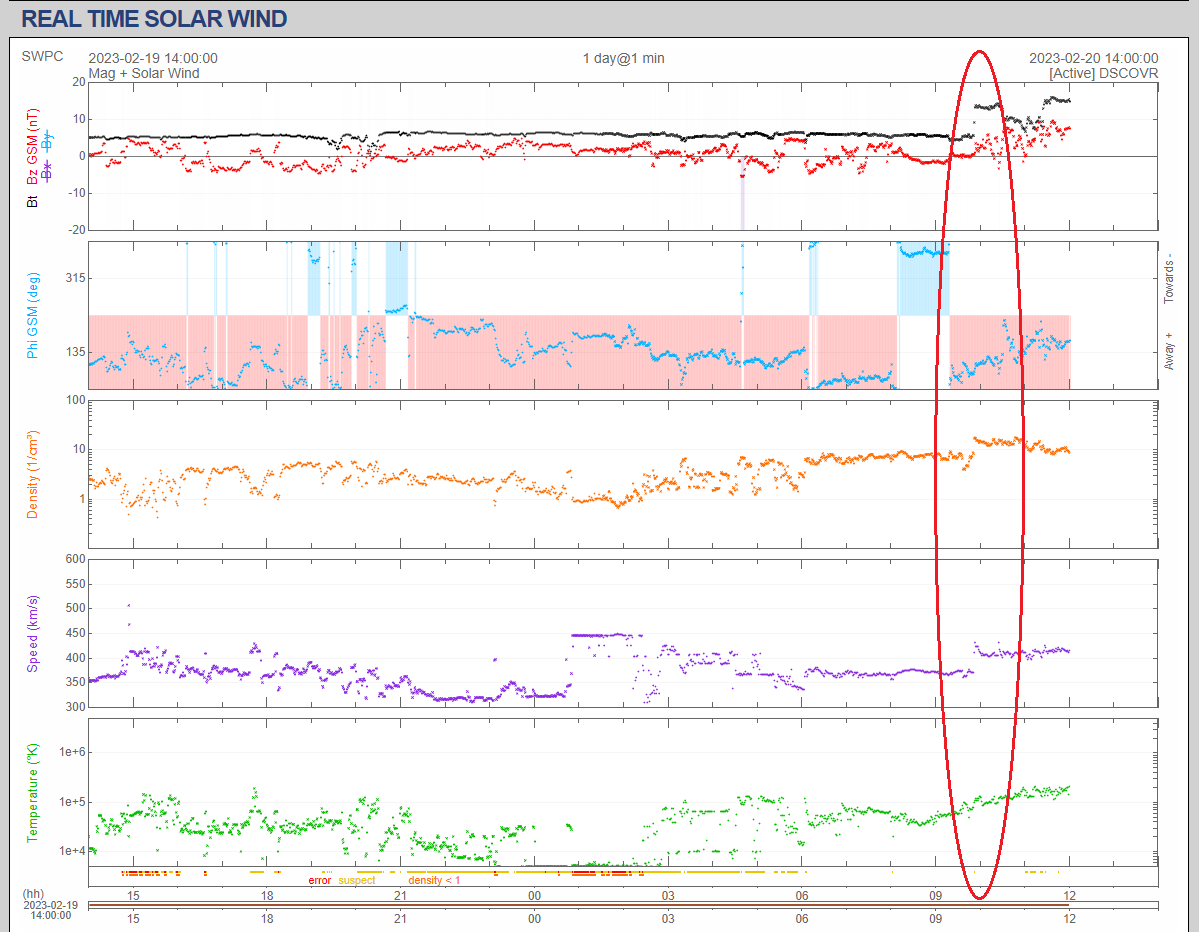Space Weather Alert Update - 20th February 2023
What Has Happened?
A possible weak sudden impulse seen on the BGS magnetograms on the 18th of February at 10:56 may have been the overdue CME from the 15th, however the impact on geomagnetic activity was very little if any. Alert 16-Feb-2023.
The Earth has encountered a glancing blow from another CME at 09:52 UT this morning as measured by the ACE and DISCOVER satellites. This is associated with an X2.2 flare that lifted off from the Sun on the 17th of February and has so far not lead to any significant activity levels. However, there is still the possibility of enhancements should the interplanetary magnetic field (IMF) become orientated south.
Sign-up to receive Geomagnetic Disturbance Alert emails.
Follow us on Twitter:
Follow @BGSauroraAlert for more occasional aurora alerts.
Follow @BGSspaceWeather for daily space weather forecasts.
Glossary
- BGS
- The British Geological Survey is a geoscience research centre that is part of UK Research and Innovation (UKRI) and affiliated to the Natural Environment Research Council (NERC).
- CME or Coronal Mass Ejection
- The eruption of a portion of the outer atmosphere of the Sun into space, caused by rapid changes in its magnetic field. Often occurs along with a solar flare.
- Solar Wind
- The ever-present expansion of the Sun’s hot outer atmosphere into the solar system, which carries space weather within it.
- Solar Flare
- Energy released by the explosive reorganisation of magnetic fields within the Sun's atmosphere.
- Interplanetary magnetic field (IMF)
- The magnetic field carried with the solar wind.



